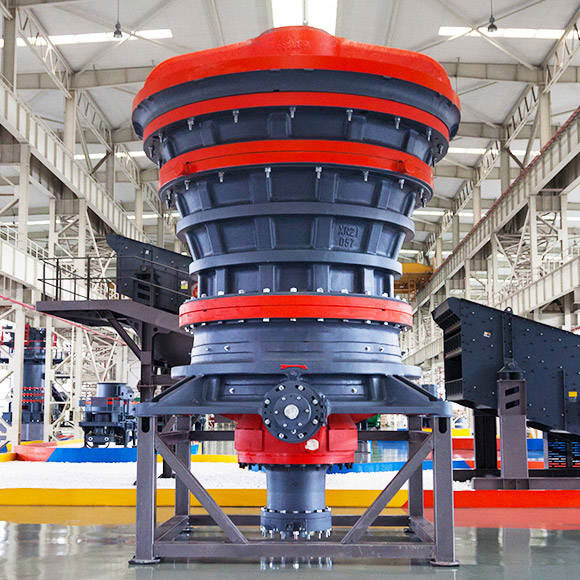Gyratory and cone crushers are crucial comminution devices in various industries that deal with the crushing and processing of raw materials. While they share some similarities, they also exhibit distinct differences in terms of design, application, and performance. In this explanation, we will delve into the details of both types of crushers, highlighting their contrasting features and functions.
Design and Operation: A gyratory crusher consists of a conical-shaped shell that accommodates a mantle, a central conical member, and an eccentrically rotating shaft. Material to be crushed is fed through the top of the crusher, and it is crushed between the mantle and the concave (the inner surface of the shell) as the mantle gyrates eccentrically within the shell. The large opening at the top enables the material to be fed into the crushing zone progressively.

On the other hand, a cone crusher comprises a conical-shaped crushing head mounted on a spindle that is vertically suspended within a stationary bowl. The crushing head is typically lined with manganese steel, and the bowl has concave liners made of the same material. Material is fed into the top of the cone crusher and is crushed between the crushing head and the bowl liner. The gap between the two crushing surfaces is adjusted by moving the bowl vertically, which controls the size of the crushed product.
Application: Gyratory crushers are primarily used in mining and ore processing for relatively large and abrasive materials. They are ideal for hard and abrasive rocks, as well as materials like ores and minerals. Their ability to handle high-capacity primary crushing makes them suitable for large-scale operations.
Cone crushers, on the other hand, find their applications in secondary, tertiary, and quaternary crushing stages. They are widely used in aggregate production, construction material recycling, and the mining industry. Cone crushers are favored for their versatility, as they can handle a wide range of different materials, from soft to hard and from fine to coarse.
Size Reduction Ratio: Gyratory crushers generally have a higher reduction ratio compared to cone crushers. This means that the gyratory crusher can accept larger feed sizes as compared to the cone crusher, producing finer and more uniform products. Cone crushers, on the other hand, tend to produce a more elongated and flaky product with a smaller size reduction ratio.
Maintenance and Operating Costs: Gyratory crushers can be more expensive to operate and maintain than cone crushers. They have a higher initial cost and generally require more manpower to operate and maintain. Additionally, the replacement of wear parts in gyratory crushers can be more complex and time-consuming compared to cone crushers.
Cone crushers are often favored for their lower operating and maintenance costs. The wear on the wear parts is generally less severe, and the replacement process is usually simpler, which can lead to reduced downtime.
Space Considerations: Gyratory crushers require more space and installation complexity due to their larger physical size and higher headroom requirements. Cone crushers are more compact and can be easily installed in smaller spaces.
